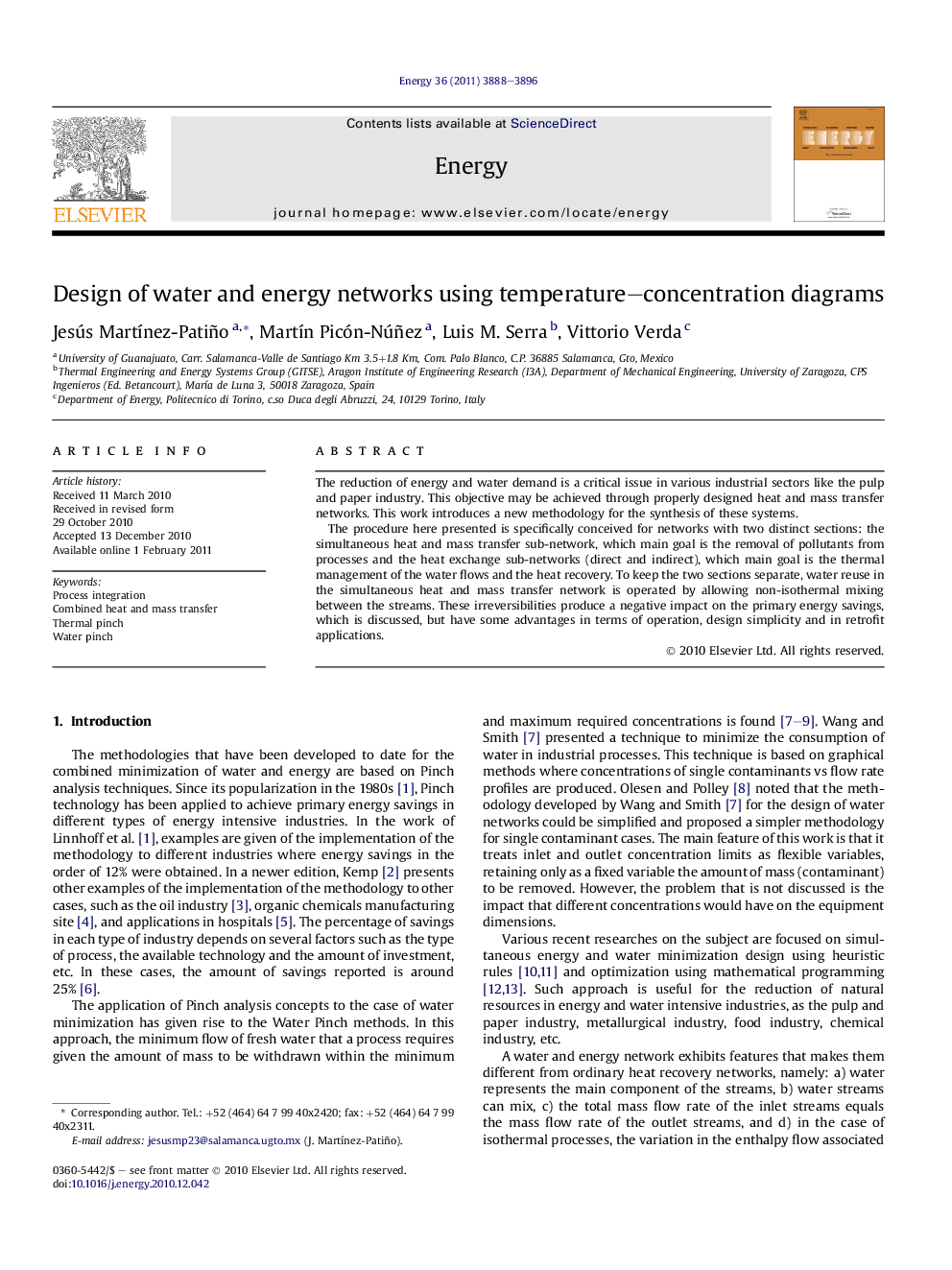| Article ID | Journal | Published Year | Pages | File Type |
|---|---|---|---|---|
| 1734723 | Energy | 2011 | 9 Pages |
The reduction of energy and water demand is a critical issue in various industrial sectors like the pulp and paper industry. This objective may be achieved through properly designed heat and mass transfer networks. This work introduces a new methodology for the synthesis of these systems.The procedure here presented is specifically conceived for networks with two distinct sections: the simultaneous heat and mass transfer sub-network, which main goal is the removal of pollutants from processes and the heat exchange sub-networks (direct and indirect), which main goal is the thermal management of the water flows and the heat recovery. To keep the two sections separate, water reuse in the simultaneous heat and mass transfer network is operated by allowing non-isothermal mixing between the streams. These irreversibilities produce a negative impact on the primary energy savings, which is discussed, but have some advantages in terms of operation, design simplicity and in retrofit applications.
► In this work we present a tool for the design of water and energy networks. ► The network systems consist of two distinct sections, namely: section where concentrations targets are achieved and the section where heating and cooling is supplied. ► The methodology is developed based on allowing non-isothermal stream mixing. ► Non-isothermal mixing reduces the number of heat exchanges required for meeting the heating and cooling duties.
